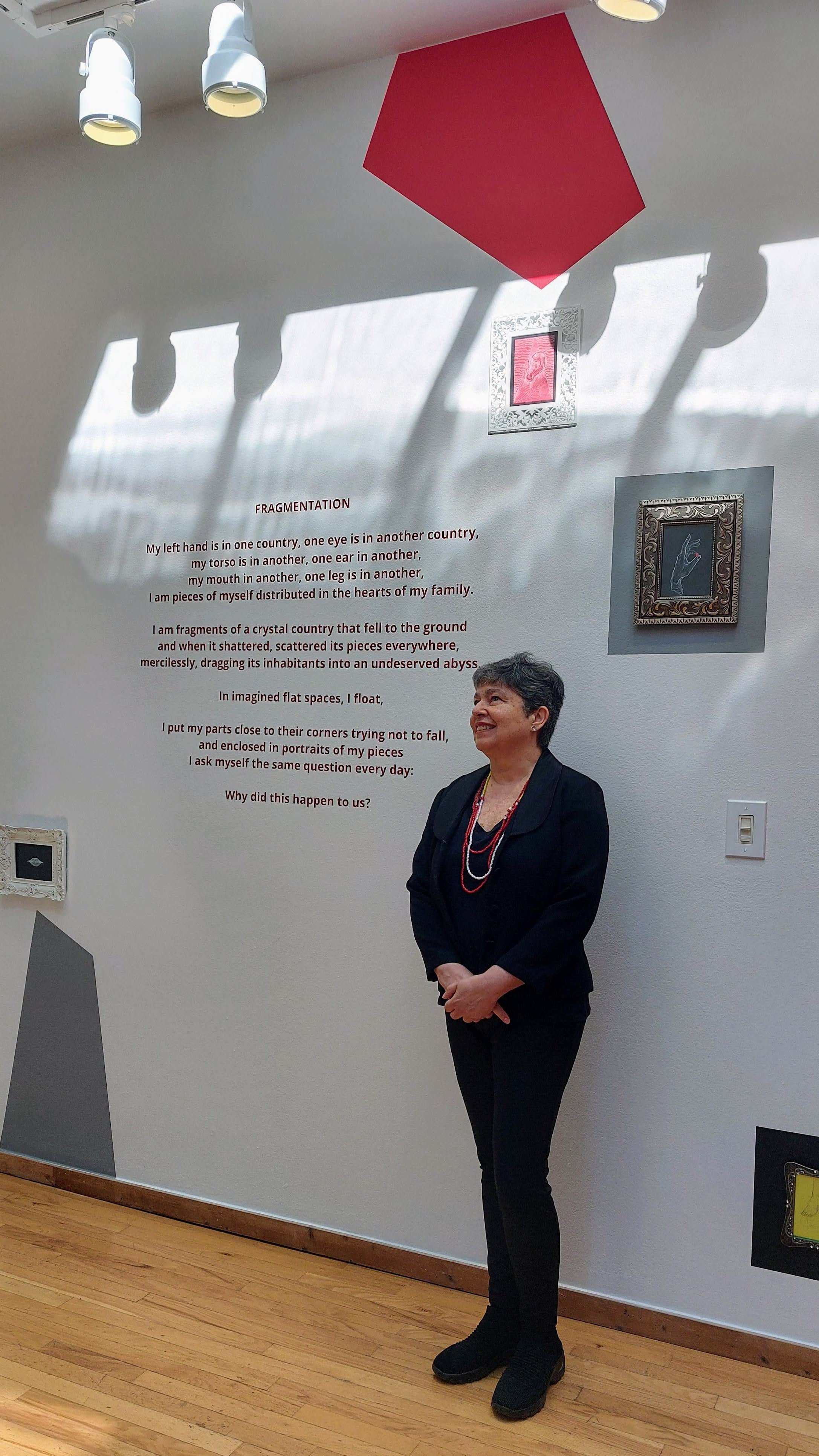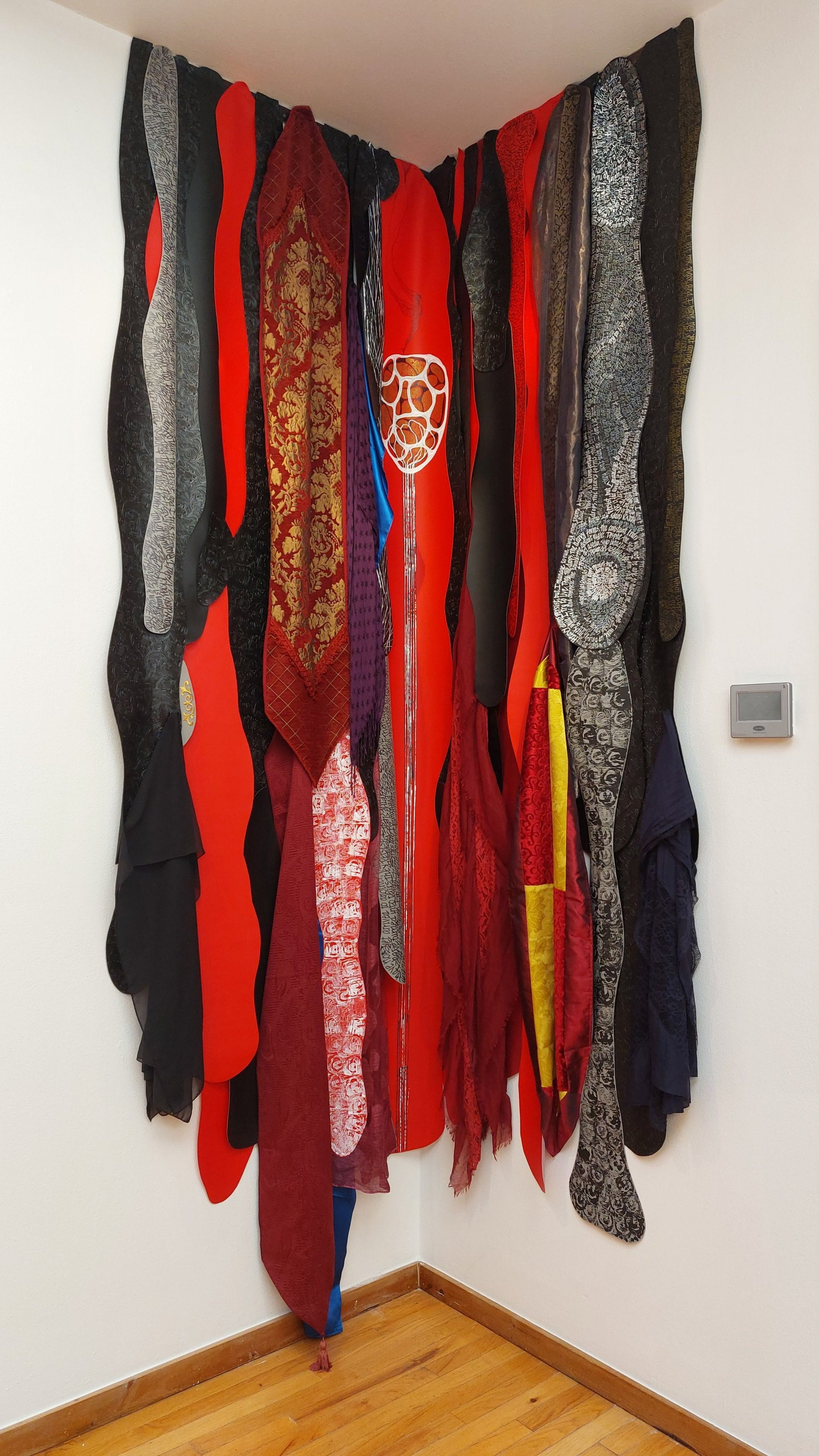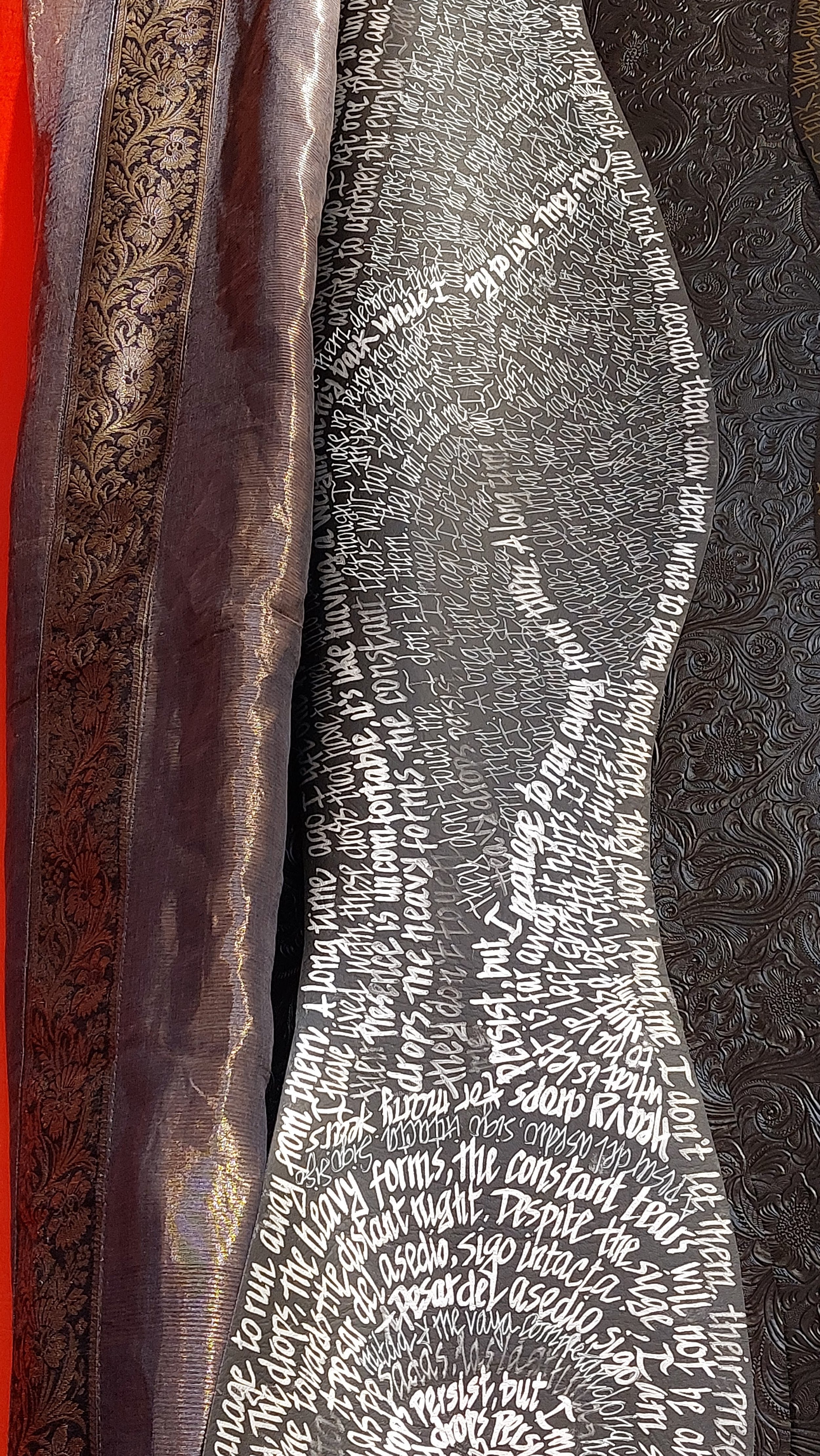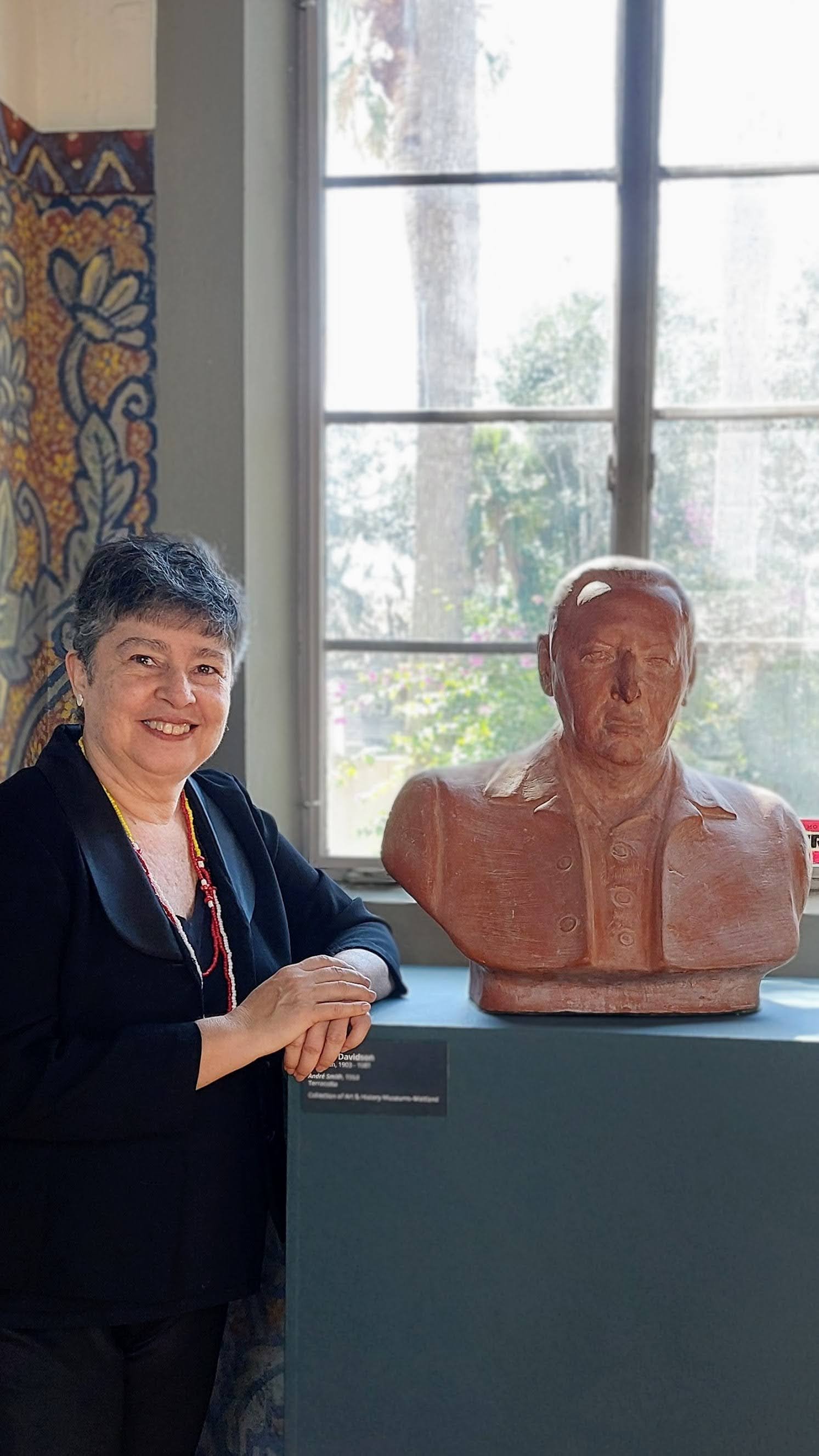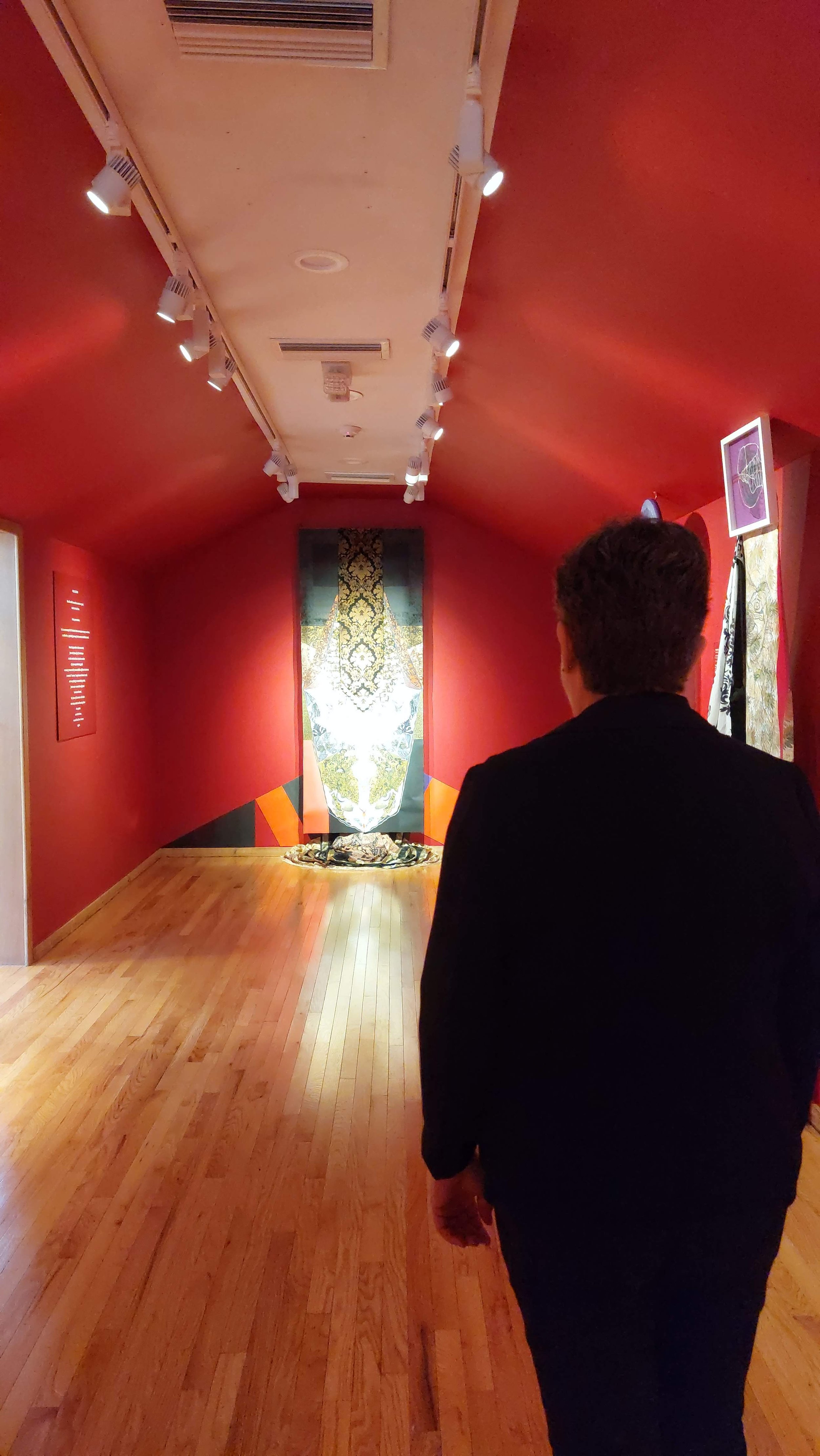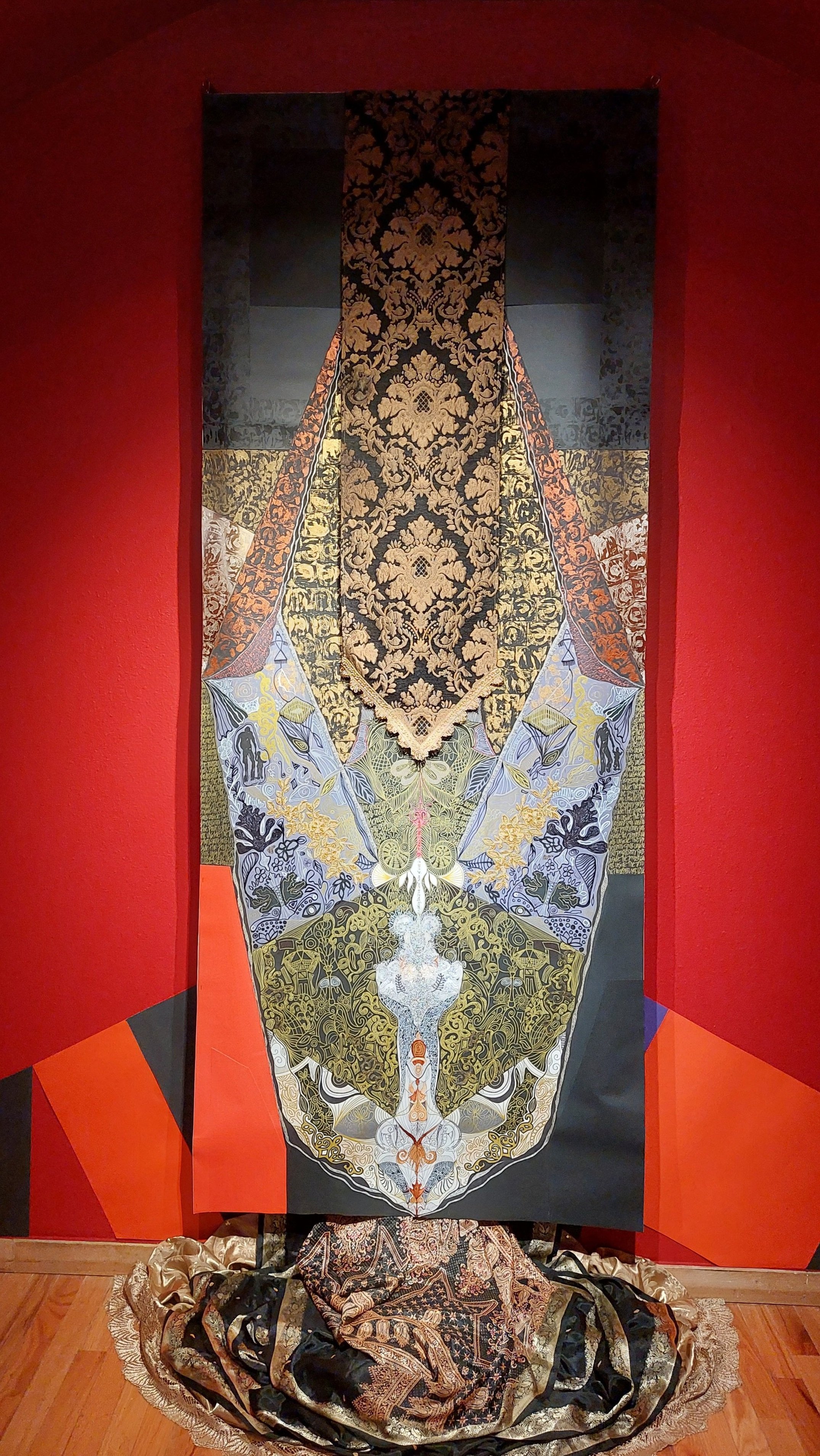Gisela Romero
AVANT interviews with contemporary women artists and leaders in the art industry
Maria Guerrero, founder of Women in the Arts, Inc. visits Gisela Romero, artist in residence at the Art & History Museums in Maitland, Florida for a conversation about her exhibition: “A Constant Goodbye.”

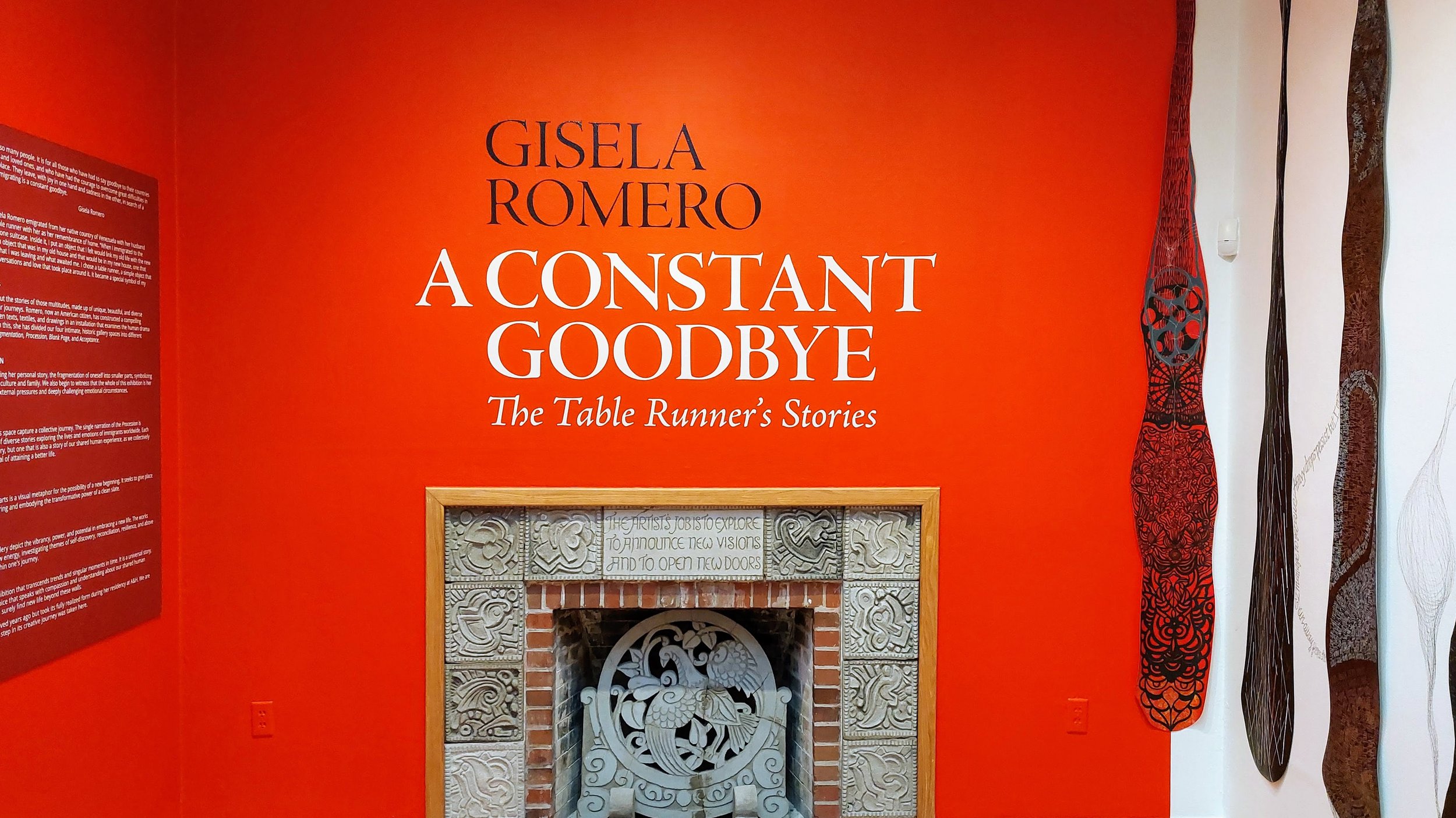
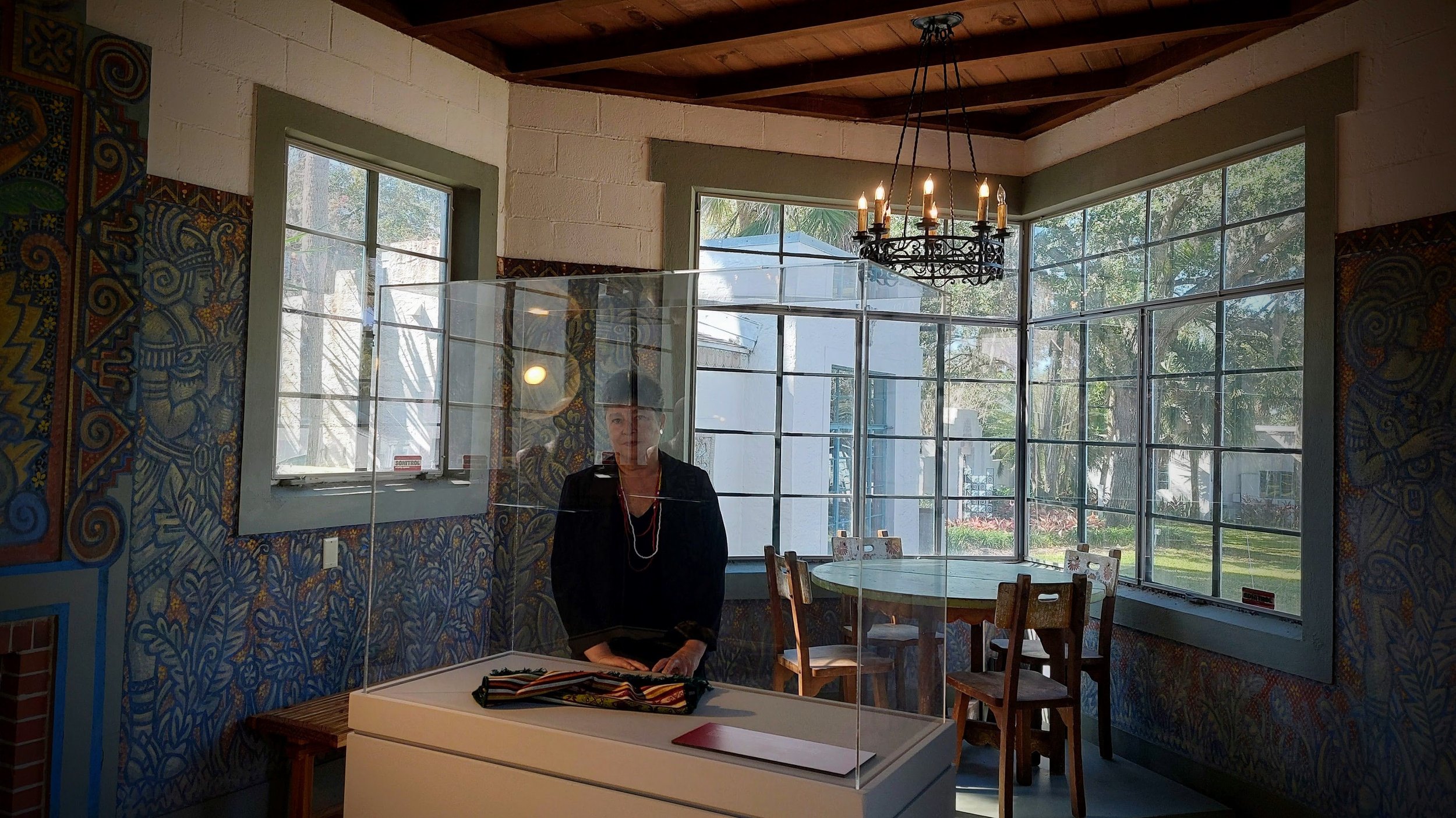
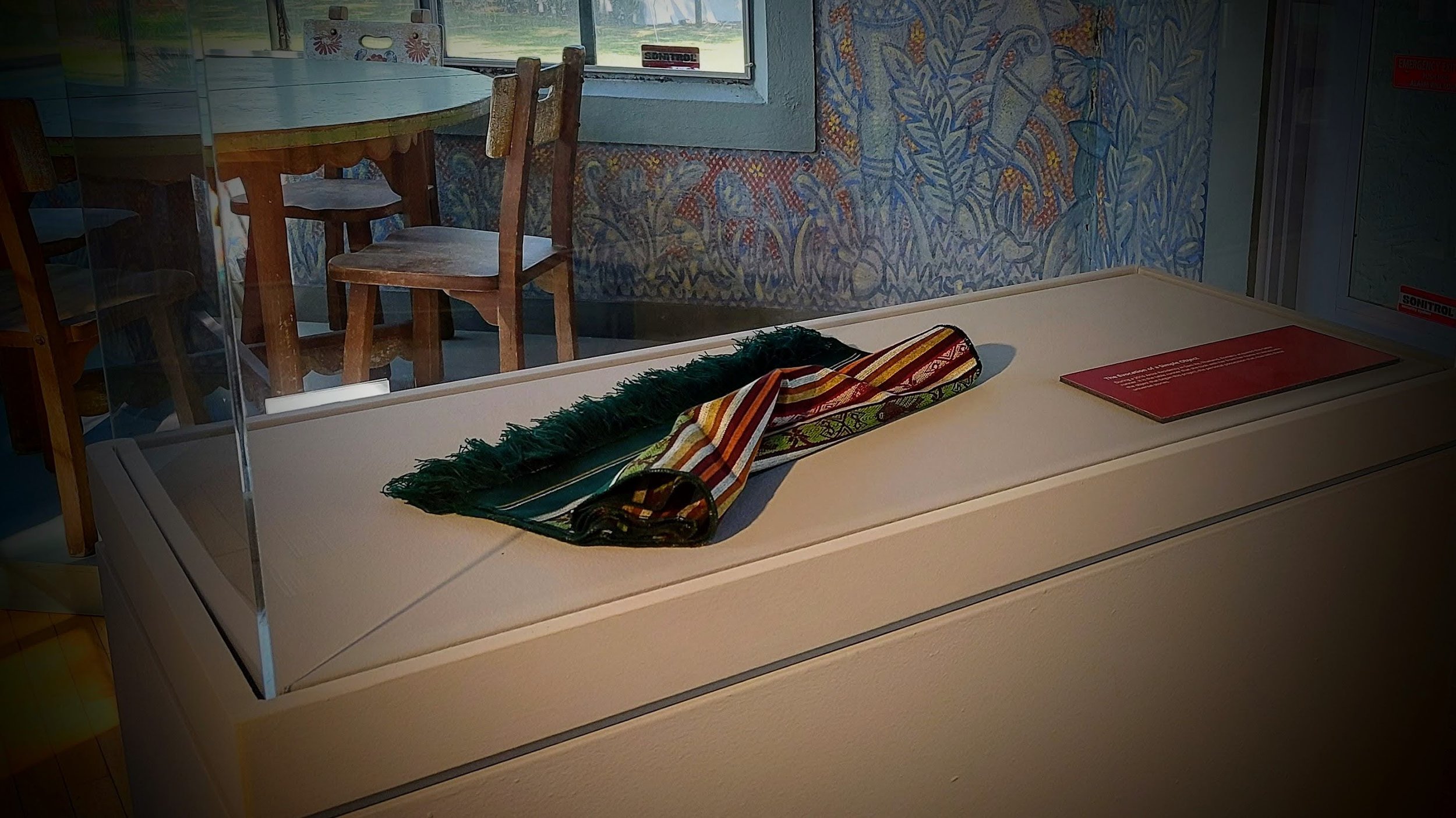
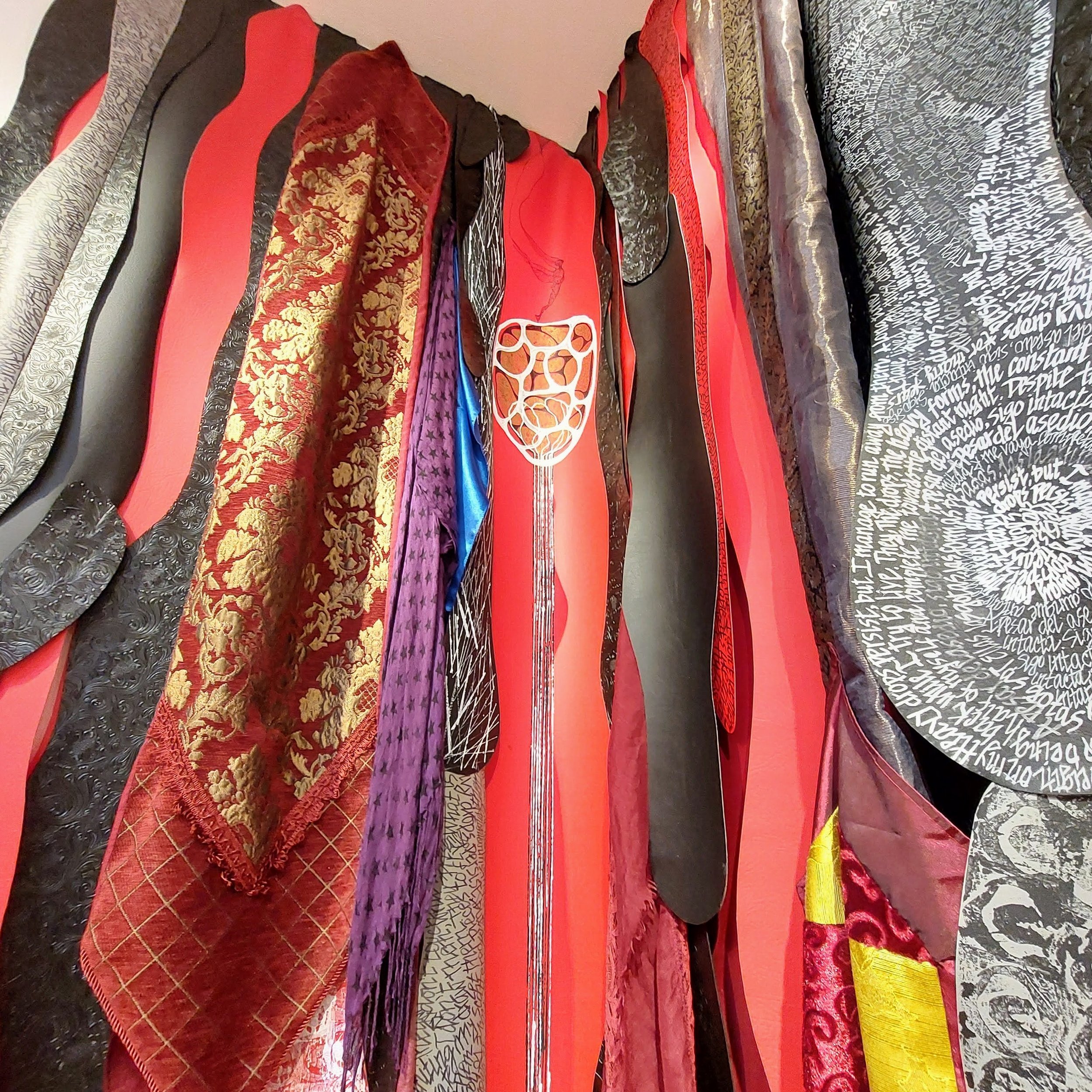
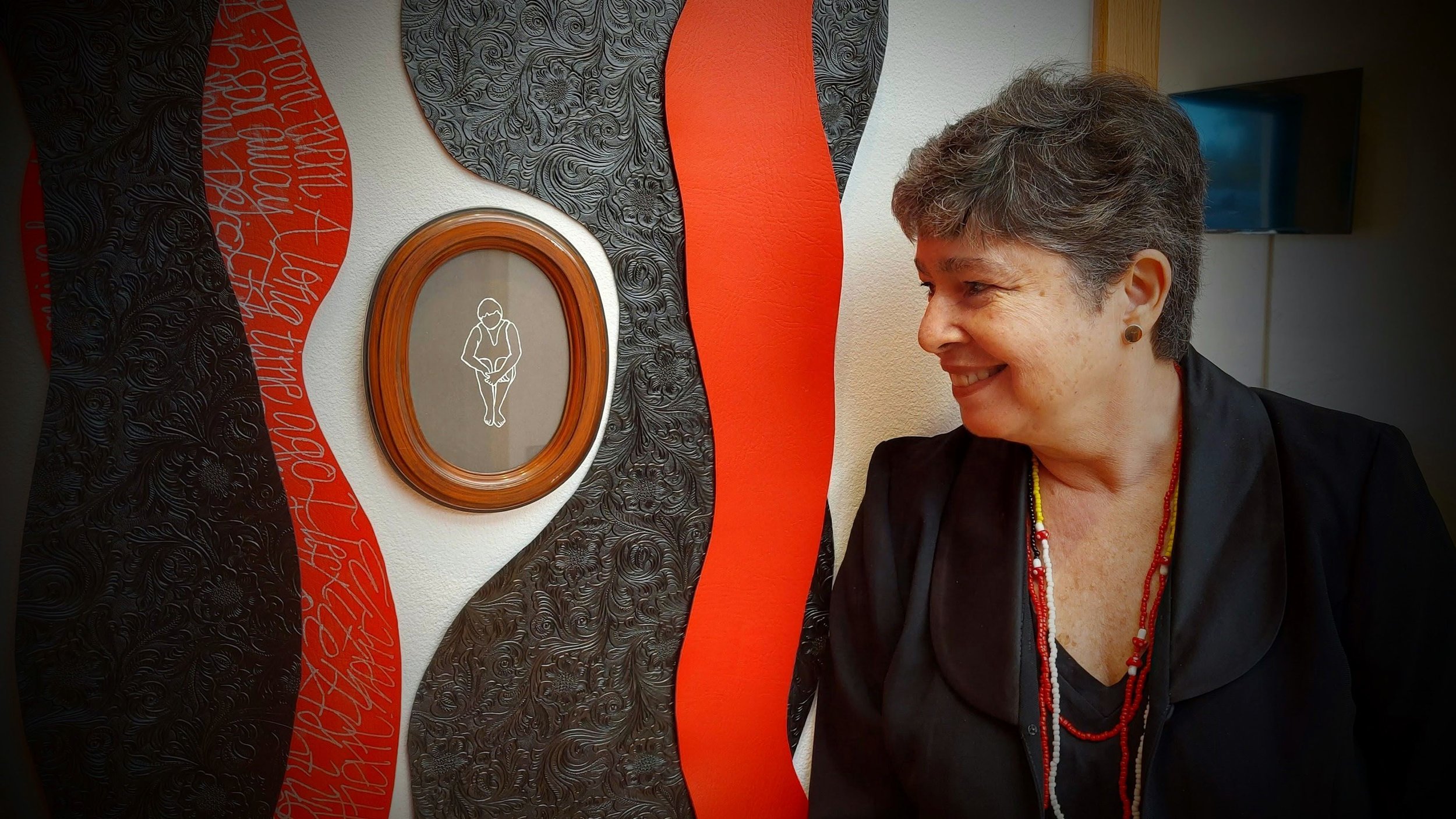
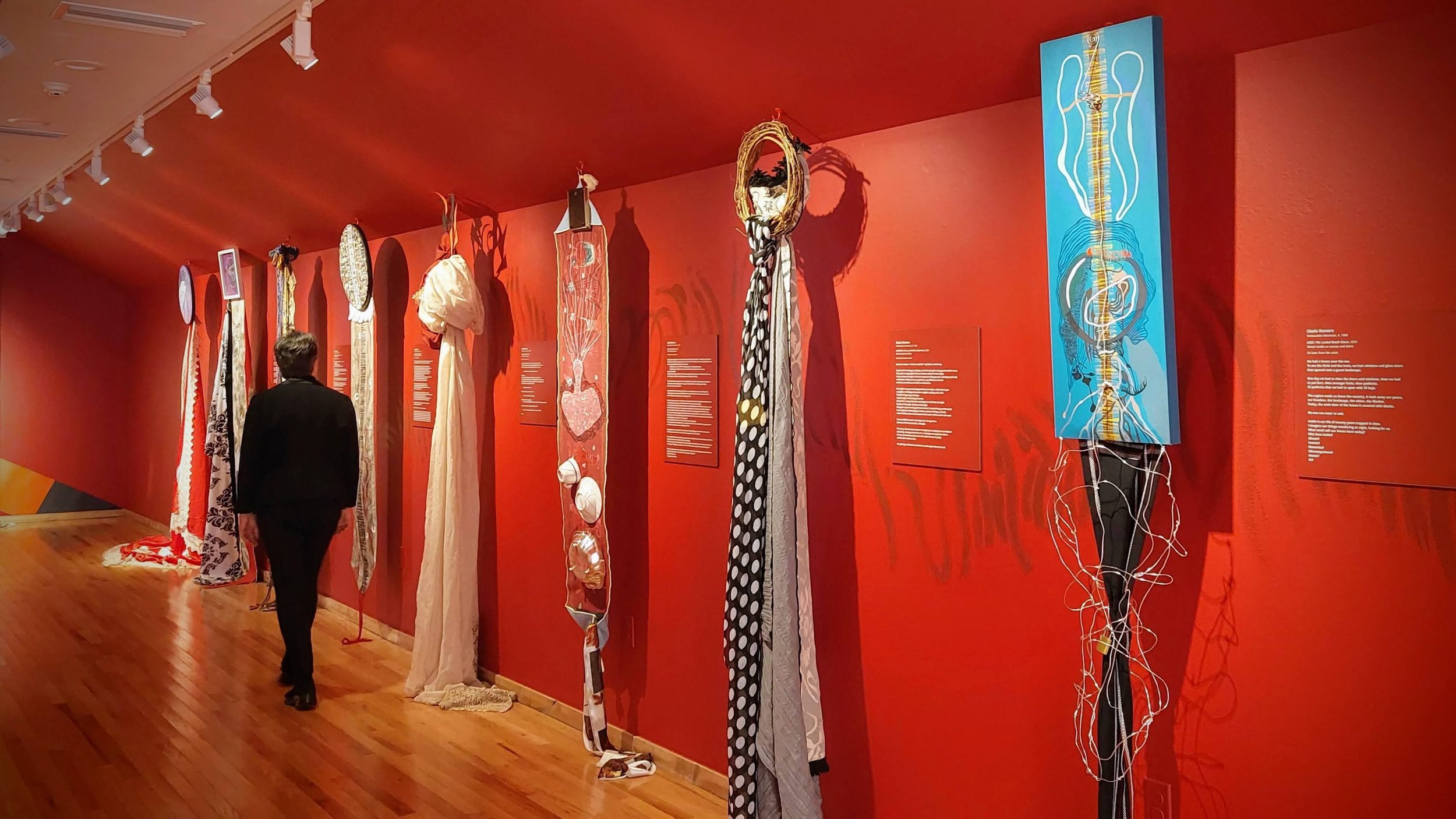
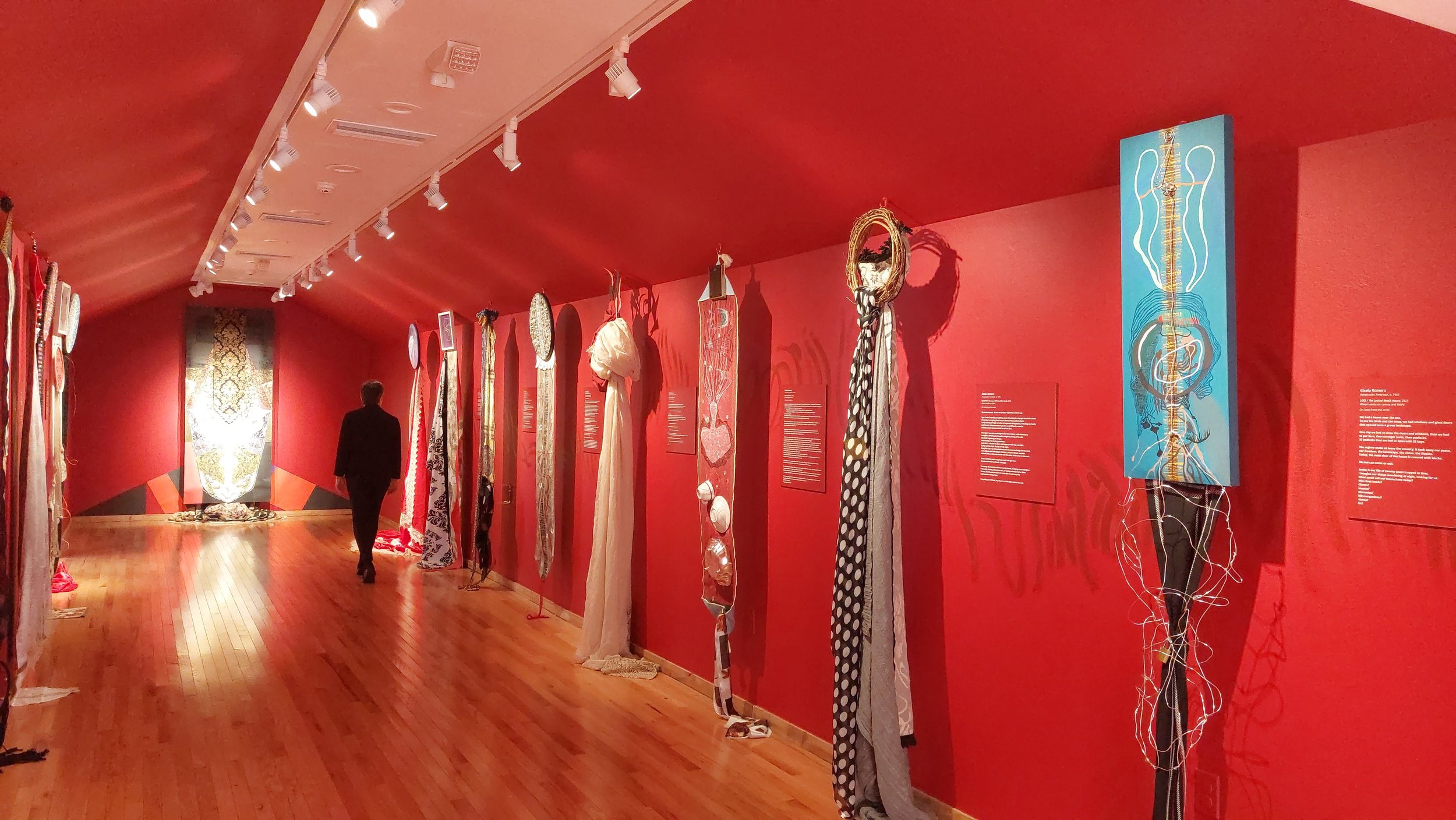
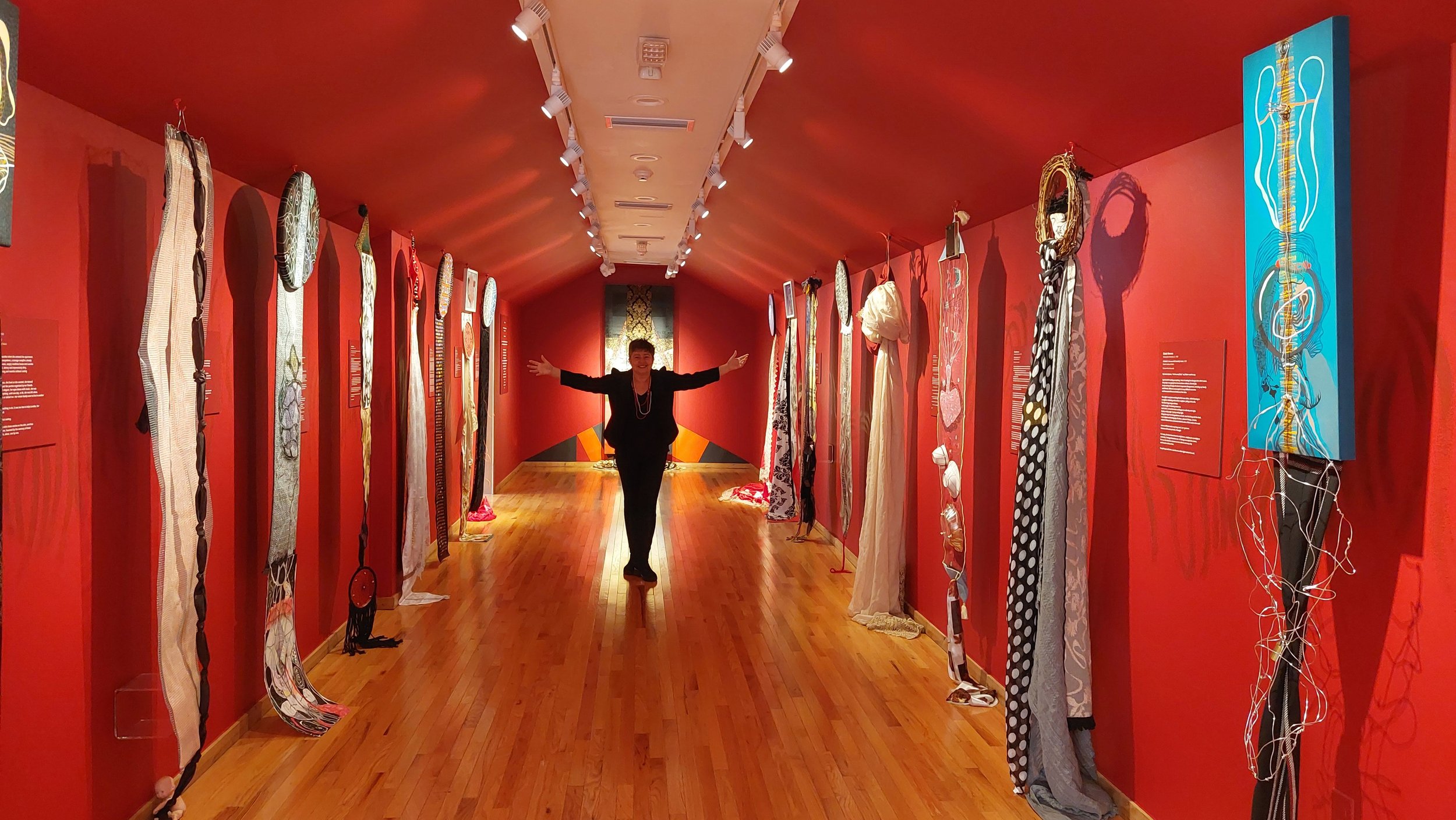
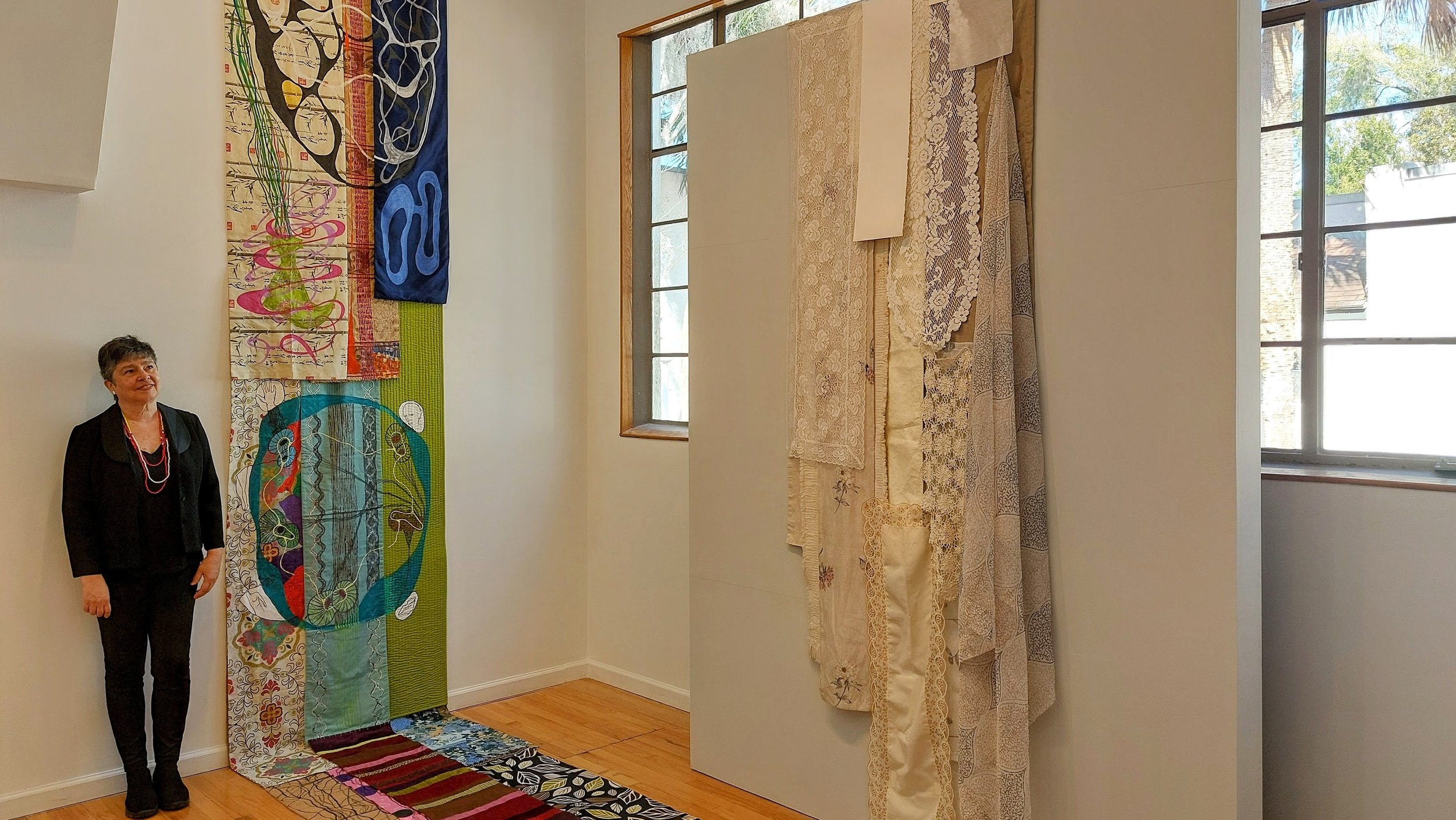
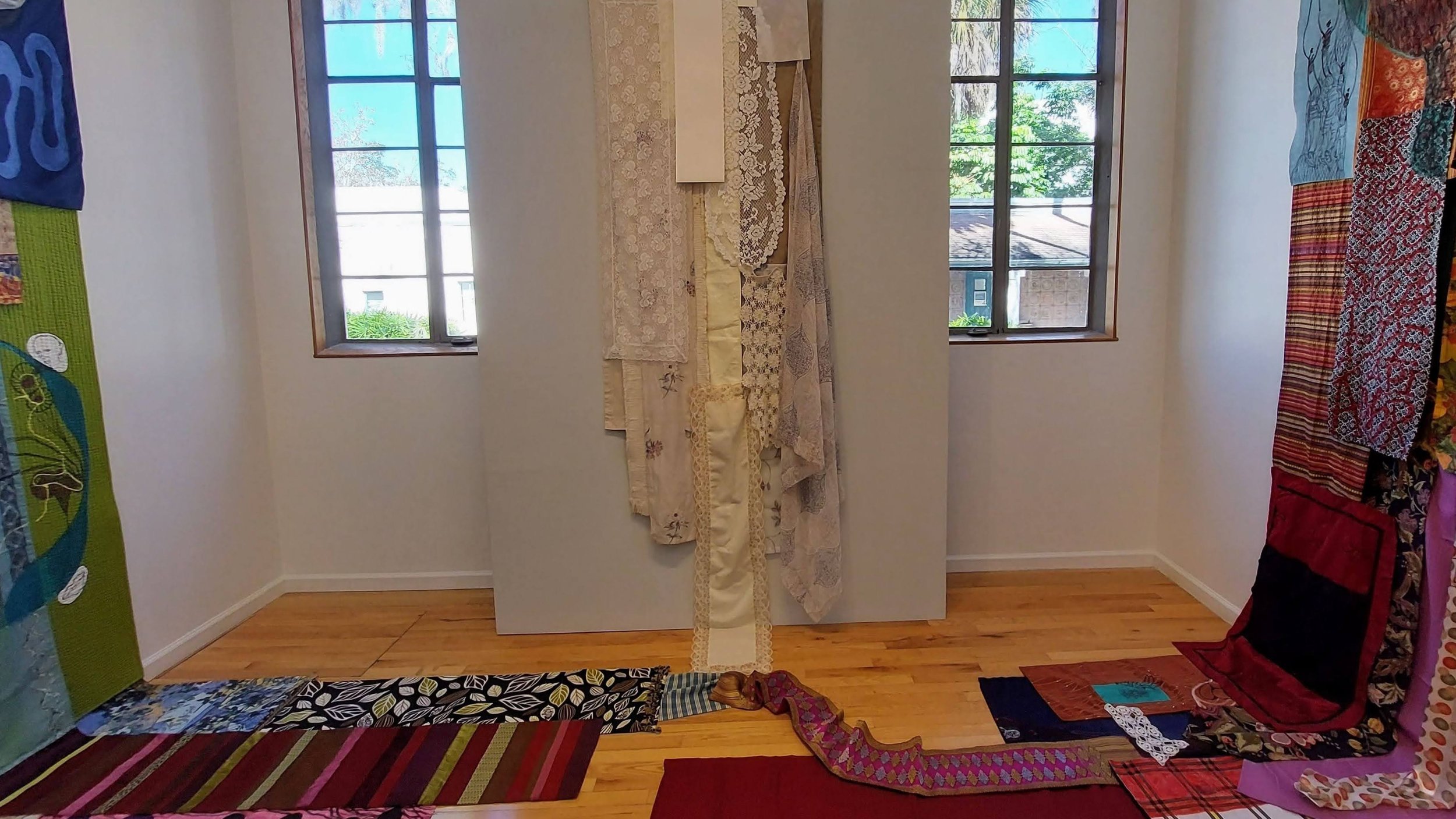
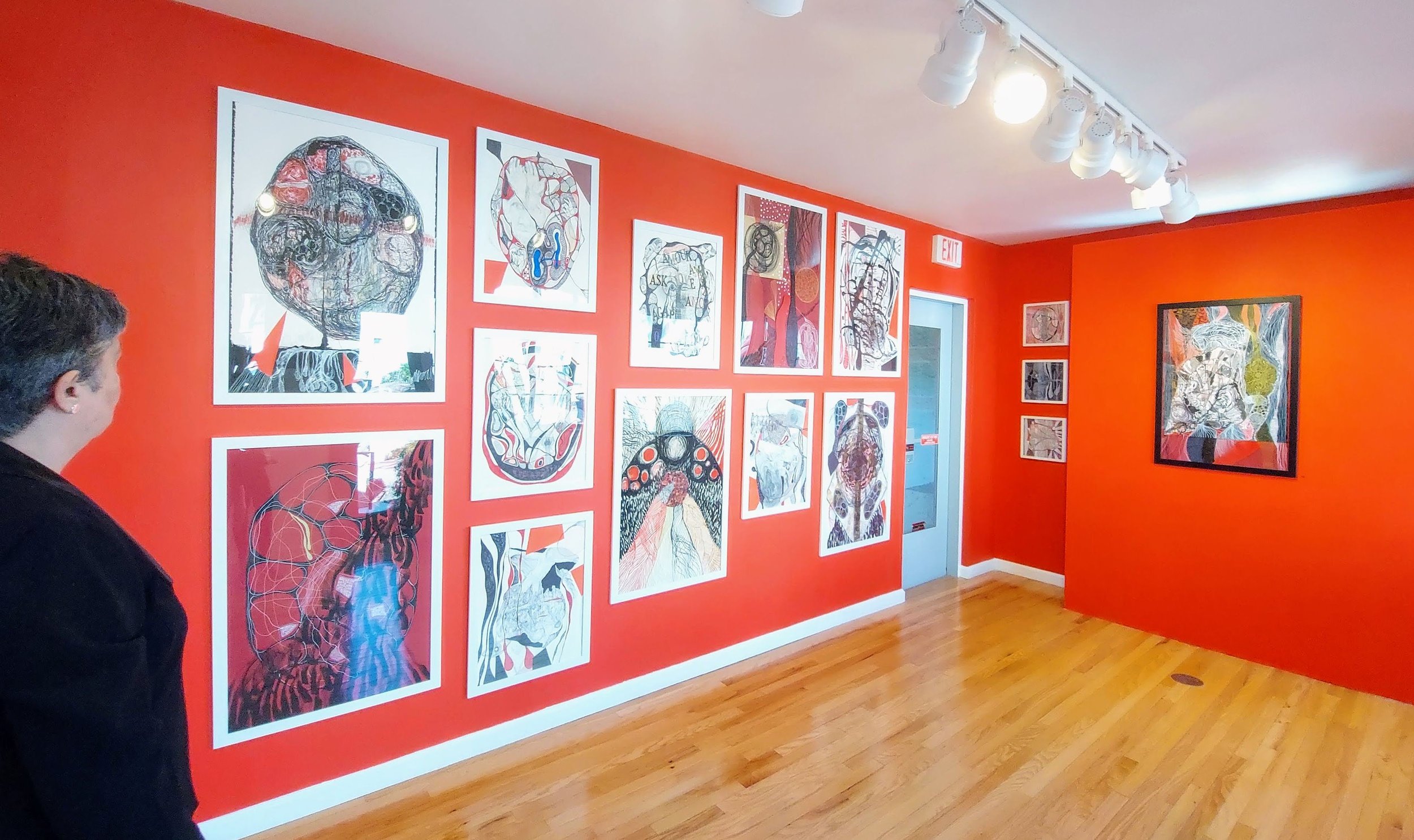
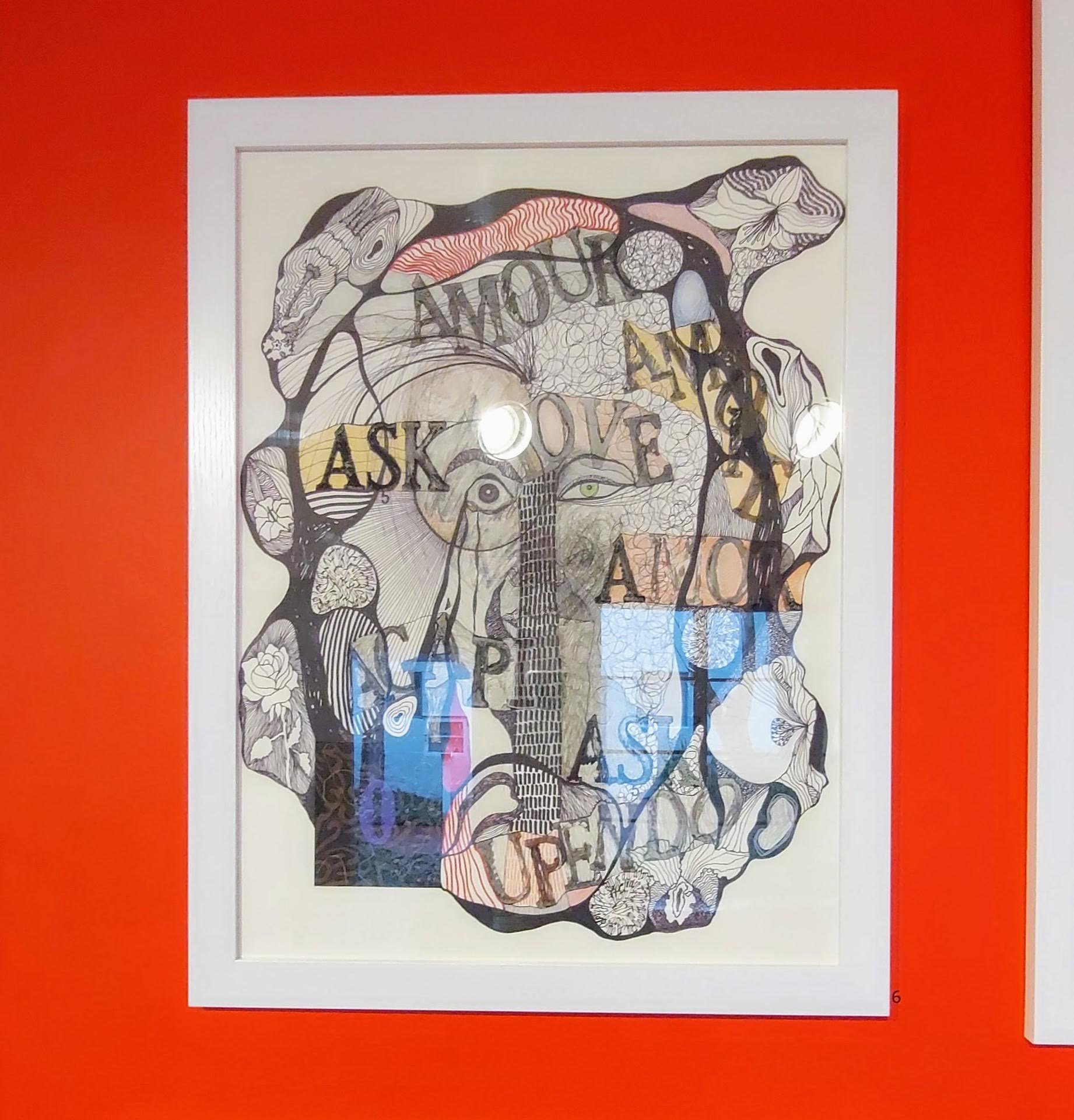
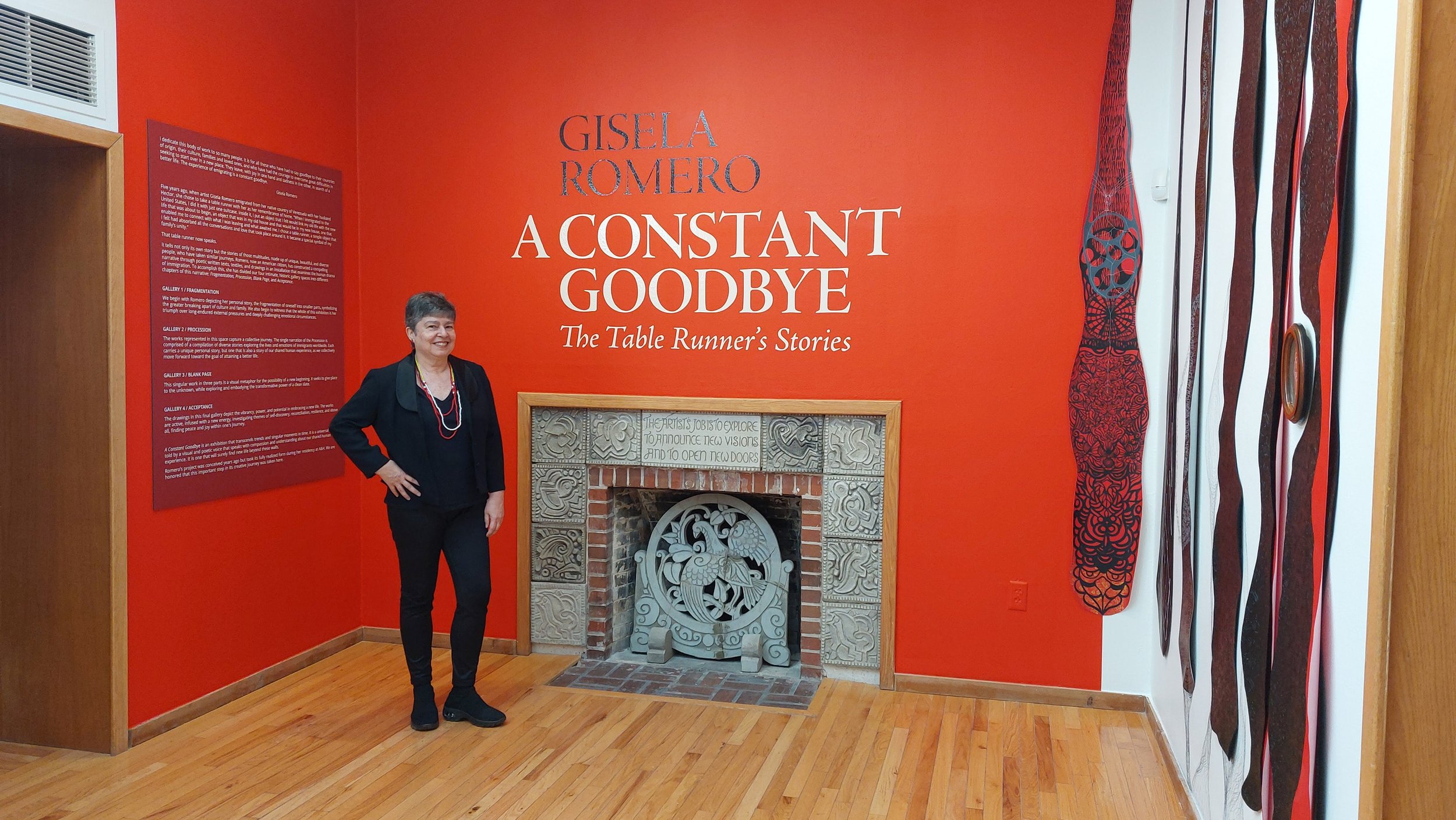
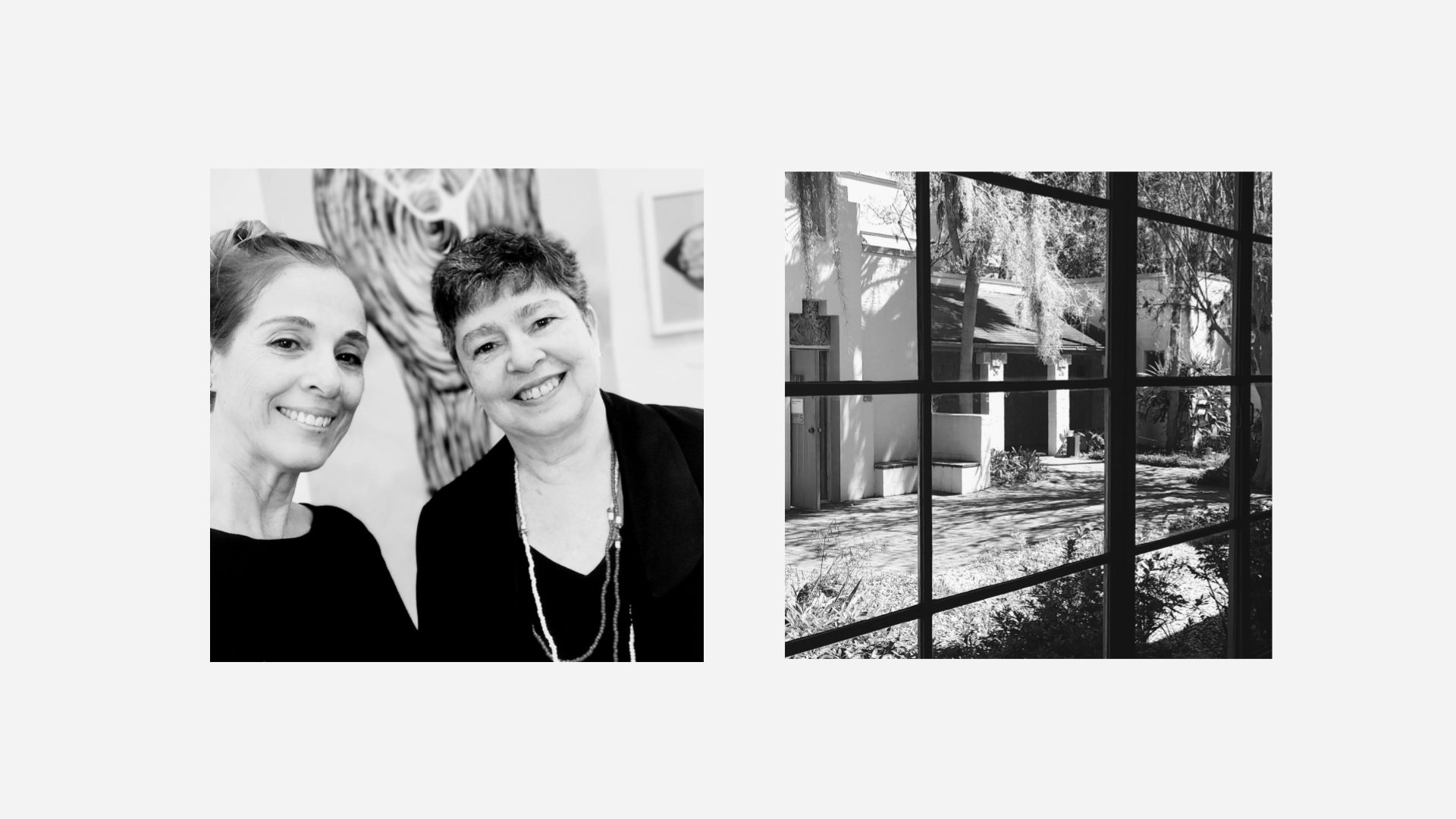
Images © Maria Guerrero, Women in the Arts, Inc.
Transcript
[To improve the flow of the transcript, minor revisions have been made for readability purposes.]
The Art of Goodbye: Gisela Romero's Solo Show Explored
Maria Guerrero: I arrive at the Art and History Museums in Maitland, Florida. The morning is getting started and warm sunlight is filtering through the new leaves and first flowers of spring as I walk toward the Artists In Action Studios. My name is Maria Guerrero, founder of Women in the Arts, Inc., and this is AVANT, a series of interviews to introduce you to the life, work, and legacy of contemporary women artists and leaders in the art industry. In this episode of the series, I speak with visual artist Gisela Romero to learn more about her first solo show at the museum.
Gisela Romero: Hi, Maria. Thank you for inviting me to do this. My name is Gisela Romero. I was born in Venezuela. I am a visual artist. I am living here in Orlando, I have been here for six years, and, right now I am one of the Artists In Action at the Art and History Museums of Maitland.
A Constant Goodbye
Maria: My attention is drawn to the exhibition title and how it was developed.
Gisela: Well, the title of the exhibition is A Constant Goodbye, which in Spanish means Un Adios Constante, and, we decided, I mean, we, because, I was working with a Curator [Dan Hess] for nine months to have this exhibition ready, and, one day I talked to him and I said, you know, being an immigrant is saying goodbye all the time, It's a constant goodbye, and he said to me, you know, I think that this should be the title of the exhibition. And it's right, because you say goodbye to all the things that you leave in your country when you move, and then you say goodbye almost every day to everything in the new place, because you meet people, and then you say goodbye to the people. You have neighbors, you move, and then you have to say goodbye to the neighbors, and yes, it's a constant goodbye. There is no way to put it better than that.
Gisela Romero's exhibition, A Constant Goodbye explores The Table Runner Stories
Maria: I wanted to understand Gisela's creative process and what was her experience working with mixed media, fabric, and paper.
Gisela: Usually I don't make a piece at the time. I make many pieces at the time. For this particular body of work, I am using the table runner as a surface. And of course, I also make drawings on paper. What I do is that for this particular theme, because, as you know, the exhibition is a Constant Goodbye, The Table Runner Stories of Gisela Romero, and what I did was to imagine stories from the table runners that I bought in thrift stores or that people gave to me, and I thought about people talking about being here in this new place, coming from another country, and being around the table being around these table runners. So, what I did was buy it and write a story about it, this story gave me images for the small drawings, then the small drawings gave me more words, and then more words gave me images for the big drawings. So, it was a process. It was like a circle coming from the table runner to the story and then to the drawings. And the difference in talking about technique, of course, making drawings on paper, I have to use different, materials, and the lines, of course, are more clear than the ones that are on the table runner surface, which is fabric, and it's more difficult to use some materials; but what I did was to make collages, -you know, try different things so I can really explore, each of the surfaces.
Gisela gives her insight into the piece titled: Drops
Maria: A Constant Goodbye was curated by Chief Curator Dan Hess in collaboration with the artist. Gisela's large wall installation Heavy Drops Persist or Drops, sets the tone as one enters the exhibition, its power and strength radiate into the nearby galleries.
Gisela: The piece, Drops was at the beginning a piece that I made in Venezuela in 2005, and it was a very, very big piece and it was all black. I used materials like asphaltum or fabrics and the idea was to say that, -because Venezuela is an oil country, all these drops, because of the regime that was going on in Venezuela, and the political situation was very bad, all these drops are coming to me to get me, but I am not going to let them get me. I had all these drops coming towards me and I was in the middle with a very light drawing of me in the center. What I'm saying is that these drops transformed into tears because we have to leave, all the diaspora that we have, all these people coming from Venezuela to different countries. I transformed that into tears. I adorn them, I put them on different surfaces, I take them and put words on them. I am still intact. They don't touch me, I don't let them get me as they got me in 2005. So it's the same situation, I am still alive, I am still willing to get my life in a better place. And that's the idea of that particular piece.
Maria: In contrast with Drops, can you tell us more about your piece titled Love?
Gisela: This is a very beautiful story about a guy that had grandparents from different places and they met in different circumstances. One met in Turkey, the other one was from Italy, the other one was from the Congo Belga, and the other one was from Brazil. All the grandparents moved to the United States. His parents met in some place in New York and they got married. Then he was born. He was born with all of these names from all the family: Tomaso, Jorge, Cosimo, names from all over the world. His name was so long that he had to make a decision and he went to change his name. He decided, because of all the stories of his family, that he was to take the name Love. And that's why you see in this particular drawing that I write Love in different languages.
Opening Night
Maria: On opening night. How did the public receive the show, and what did you learn from these interactions?
Gisela: I am still thinking about that beautiful night because when I put this vision together when I was working on it at the beginning, I started to tell my story from the Venezuelan point of view. Then I realized that all the emotions I express in my drawings and my words are universal. Every person who has been moving from one place to another has the same experience and the same emotions. Every person who has been on a transition as an immigrant or in any kind of transition in their lives has these same emotions. That particular night was very special because many people told me for example: “I am not an immigrant but my parents were immigrants, and I am very moved by this exhibition.” Another person would say the same thing and then another, and another. I was hugging so many people that night because they were crying. They were with tears in their eyes. I don't know their names. I don't know their story. They just came to me and said: “Can I hug you?” And I said, of course. That was a very emotional night for me.
Maria: Gisela's studio is embedded in the beautiful grounds of the museum, surrounded by Mayan-infused architecture, which reminds me that this is the sole national historical landmark in Central Florida. Founded by artist and architect Jules Andres Smith with the support of Mary Louise Curtis Bok. It was created as a haven for artists, a place of retreat, artistic reflection, and experimentation. Now, led by Executive Director Danielle Thomas, the museum continues to maintain, grow, and evolve this unique and rich legacy.
Gisela enjoys a day in residency where she can focus on her work and drawings
Maria: Gisela, can you tell us, how is a day in residency, and what is the impact of this opportunity?
Gisela: A typical day is a very special day. Why? Because once I close the door of my studio, I have the opportunity to think about my ideas and also the opportunity to make my drawings in a very sacred place. I listen to all the different sounds, to the wind, to the birds, the train, the water, to the sound of the voices of my friends around here, and I am here without any interruption, and I have the day for me. It's like a magical place where I can put all my ideas in order, and I have all the time to make my drawings in peace. It has been a very, very important opportunity for me. I am very grateful. I don't find even words sometimes to thank this opportunity that I had, and I have, because I am still an Artist In Action until August 2024.
Maria: Following the show, I wonder about what is next for Gisela.
Gisela: Because it was not possible to include all the stories in the gallery, I am planning to have a book to compile all these stories with the drawings. I am planning to have a book by the end of the year.
Gisela Romero shares advice for emerging artists on getting started in the visual arts
Maria: Gisela, when did you know you wanted to be an artist?
Gisela: Artists have different stages and the first one is the discovery, is that particular day when you say this is it, this is what I want to do. I was five years old. I have been an artist all my life and at that age even if you are drawing all the time, you need help from your parents, and you need help from some people at school. My Mother told me that this teacher from school told her, I think this child has a talent to draw and it may be good to send her to art classes, and she did. My Mother talked to one of the professors in Venezuela and they sent me to classes from that age, from five years old.
Maria: Gisela shared words of wisdom for those artists getting started in the visual arts.
Gisela: The main thing is if you have this moment of discovery, that this is what you want to do, is to experiment. The first thing that you have to do is to experiment with different materials, experiment with anything that you have that you can explore, and what you want to do as an artist. The second thing is to try to have an education, try to go to workshops or formal education, meet other people, go to galleries, go to exhibitions, look at videos, anything that could be related to art. The other good thing is to apply to local exhibitions. In that process you are going to find your own voice because this is the most difficult thing to do for an artist, is to find the personal voice. You have to go through different stages and I think that is: explore, try to educate yourself, go to galleries, go to exhibitions, go even to concerts because you have to believe that art is interdisciplinary, and the other thing is, of course, to try to find what do you want to say and how.
Maria: That was Gisela Romero Artist in Action at the Art and History Museums in Maitland, and this has been an installation of AVANT, a series by Women in the Arts, Inc. A 501(c)3 nonprofit organization dedicated to Celebrating the Genius of Women. For more information about our mission and programs, visit womeninthearts.org or find us on Instagram @womenintheartsinc.
- - - end of transcript.

